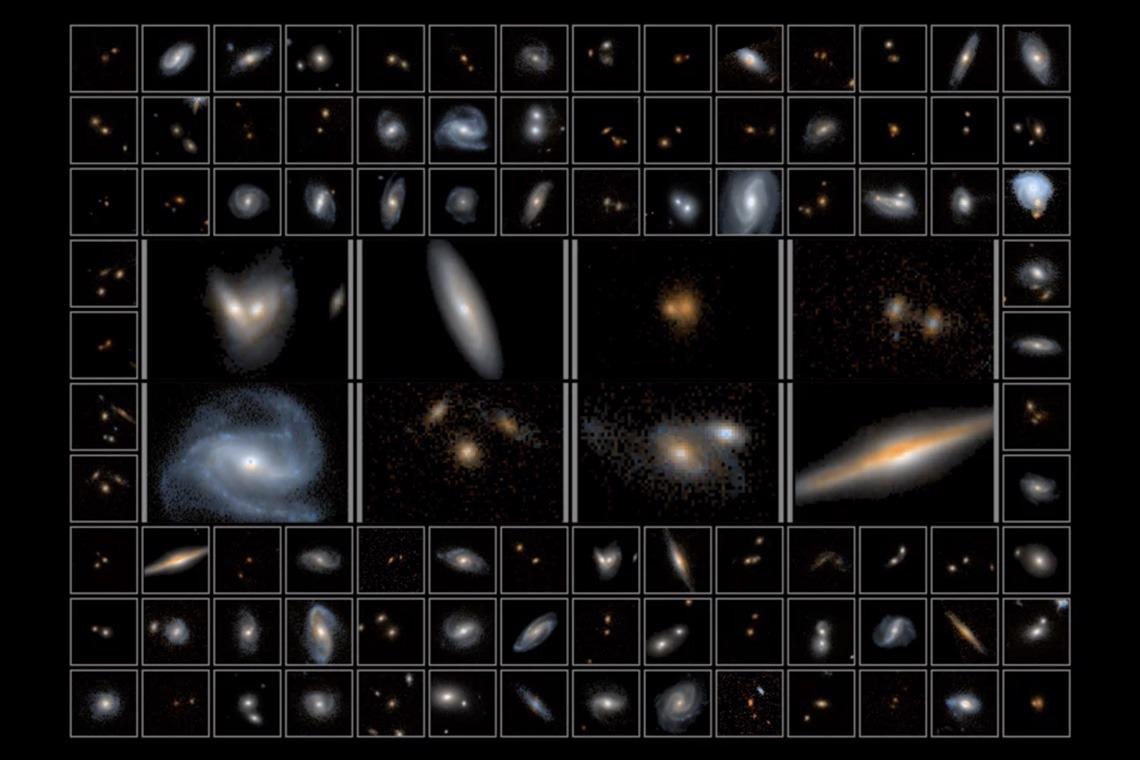The biggest near-infrared image ever acquired by NASA’s Hubble Space Telescope was just released, allowing astronomers to trace the star-forming areas of the cosmos and discover how the oldest, most distant galaxies formed.
 Galaxies from the last 10 billion years witnessed in the 3D-DASH program, created using 3D-DASH/F160W and ACS-COSMOS/F814W imaging. Image Credit: Lamiya Mowla
Galaxies from the last 10 billion years witnessed in the 3D-DASH program, created using 3D-DASH/F160W and ACS-COSMOS/F814W imaging. Image Credit: Lamiya Mowla
This high-resolution scan, dubbed 3D-DASH, will allow researchers to locate unusual objects and targets for follow-up studies with the James Webb Space Telescope (JWST), which was just launched on a decades-long mission.
On arXiv, a preprint of a paper that will be published in The Astrophysical Journal is accessible.
Since its launch more than 30 years ago, the Hubble Space Telescope has led a renaissance in the study of how galaxies have changed in the last 10 billion years of the universe. he 3D-DASH program extends Hubble’s legacy in wide-area imaging so we can begin to unravel the mysteries of the galaxies beyond our own.
Lamiya Mowla, Study Lead Author, and Dunlap Fellow, Faculty of Arts & Science, Dunlap Institute for Astronomy & Astrophysics, University of Toronto
3D-DASH offers researchers a full near-infrared scan of the whole COSMOS field, one of the finest data fields for extragalactic investigations outside the Milky Way.
Near-infrared scientists can detect the earliest galaxies that are the farthest away since it is the longest and reddest wavelength recorded with Hubble—just beyond what is visible to the human eye.
To locate unusual objects in the cosmos, astronomers must explore a large region of the sky. Until now, such a big image could only be obtained from the ground, and the resolution was poor, limiting what could be seen.
Unique phenomena such as the universe’s most massive galaxies, extremely active black holes, and galaxies on the verge of colliding and merging into one will be identified using 3D-DASH.
I am curious about monster galaxies, which are the most massive ones in the universe formed by the mergers of other galaxies. How did their structures grow, and what drove the changes in their form?
Lamiya Mowla, Study Lead Author, and Dunlap Fellow, Faculty of Arts & Science, Dunlap Institute for Astronomy & Astrophysics, University of Toronto
She added, “It was difficult to study these extremely rare events using existing images, which is what motivated the design of this large survey.”
The researchers used a new method with Hubble called Drift And SHift or DASH to photograph such a large section of sky. DASH captures numerous photos that are then stitched together into one master mosaic, comparable to shooting a panoramic photograph on a smartphone, to provide an image eight times bigger than Hubble’s regular field of view.
DASH obtains images quicker than traditional methods, taking eight instead of one picture every Hubble orbit, completing the task in 250 hours instead of 2,000 hours.
3D-DASH adds a new layer of unique observations in the COSMOS field and is also a steppingstone to the space surveys of the next decade. It gives us a sneak peek of future scientific discoveries and allows us to develop new techniques to analyze these large datasets.
Ivelina Momcheva, Study Principal Investigator and Head, Data Science, Max Planck Institute for Astronomy
As observed from Earth, 3D-DASH spans an area about six times the size of the moon in the sky. Hubble’s successor, JWST, is designed for sensitive, close-up photos to capture exquisite detail in a small region, therefore this record is unlikely to be beaten.
Until the next generation of telescopes, like the Nancy Grace Roman Space Telescope and Euclid, is deployed in the next decade, this is the biggest near-infrared picture of the sky available to astronomers.
Until then, professional and amateur astronomers alike can explore the cosmos using an interactive, online version of Gabriel Brammer’s 3D-DASH picture made at the Niels Bohr Institute, University of Copenhagen.
NASA and the European Space Agency collaborated on the Hubble Space Telescope as an international initiative (ESA). The telescope at Greenbelt, Maryland, is managed by NASA’s Goddard Space Flight Center.
Hubble science operations are managed by the Space Telescope Science Institute (STScI) in Baltimore, Maryland. The Association of Universities for Research in Astronomy in Washington, D.C. manages STScI for NASA.
Journal Reference:
Mowla, A. L, et al. (2022) 3D-DASH: The Widest Near-Infrared Hubble Space Telescope Survey. arXiv this version) doi:10.48550/arXiv.2206.01156.